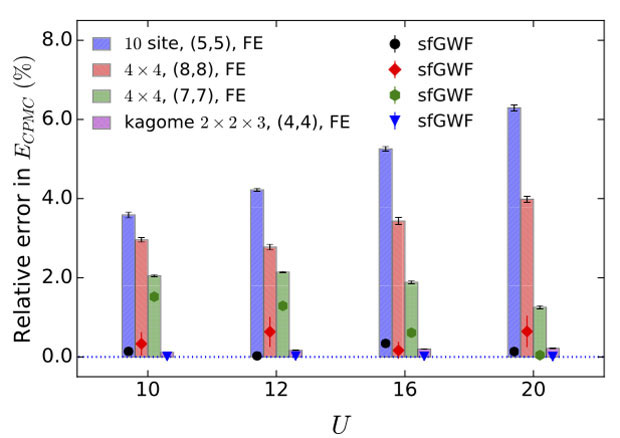Miguel Morales-Silva (15-ERD-013)
Project Description
We are developing a new capability for the accurate and efficient study of strongly correlated elemental materials with high atomic numbers from first principles. These materials are central to many of the critical missions of the Laboratory and are at the core of the theoretical high-energy-density and stockpile stewardship science performed here. Many physics applications require equations of state that must span up to nine orders of magnitude in density. Because most of this area of interest is completely inaccessible to focused science experiments, we must rely on theoretical methods to quantify our equation-of-state uncertainties in these regimes. We will develop, implement, and apply the auxiliary-field quantum Monte Carlo method (algorithms that perform repeated random sampling to obtain numerical results) to quantify and significantly reduce uncertainties in the equations of state, particularly in relation to actinides, by enabling the accurate study of strongly correlated high-atomic-number materials from first principles. The proposed method allows the calculation, by use of Monte Carlo techniques, of averages of operators in many-body mechanical problems. We will extend the capabilities of the method by incorporating the treatment of magnetism and relativistic effects, in addition to implementing novel wave functions. We will focus on the study of transition metal oxides and strongly correlated f-orbital electron systems, including lanthanides and actinides. The new capabilities will enable new science in the area of strongly correlated materials, advanced materials design, materials for energy production, and critical materials.
We expect to develop a modern and efficient implementation of the auxiliary-field quantum Monte Carlo method aimed at large-scale computational platforms to satisfy the needs for reliable prediction of material properties. Quantum Monte Carlo methods are among the most promising alternative for beyond-mean-field calculations, offering a direct advantage over other many-body approaches by using stochastic sampling rather than explicit integration over phases. Our goal is to exploit current high-performance computational resources, in addition to preparing an implementation that can be adapted to future exoscale resources. We will expand the capabilities of the method by extending the use of novel wave functions to real systems, in particular to materials with high atomic numbers. In addition, we will reformulate the method to incorporate both collinear as well as non-collinear magnetism and spin–orbit interactions (interaction of an atomic particle's spin with its motion). Finally, we will combine the method with the density-matrix embedding theory, resulting in a powerful framework for the study of strongly correlated electronic systems.
Mission Relevance
First-principles methods that can accurately treat strongly correlated materials with high atomic number are an integral part of theoretical high-energy-density and stockpile stewardship science at Livermore. With this research project, we will develop capabilities that will be important in quantifying and reducing the uncertainties in equations of state using computational methodology, in support of the Laboratory's central mission in national security and core competencies in high-energy-density science and high-performance computing, simulation, and data science.
FY16 Accomplishments and Results
In FY16 we (1) improved the efficiency (sparse implementation of the linear algebra with speedups of twofold to tenfold), memory management and usage (sparse and shared memory storage, leading to tenfold reduction in memory consumption), and parallel scaling (improved load balancing and communication) of the auxiliary-field quantum Monte Carlo code; (2) began implementation of a next-generation version of the code based on a hybrid graphics processing and central processing unit kernel (10–100 times faster); (3) began implementation of spin–orbit coupling in the auxiliary-field quantum Monte Carlo code; (4) performed a detailed validation and benchmark of the accuracy of the method in a set of bulk materials (see figure); (5) implemented advanced wave functions in the code; and (6) studied transition metal oxides and phase transitions for bulk cerium.






